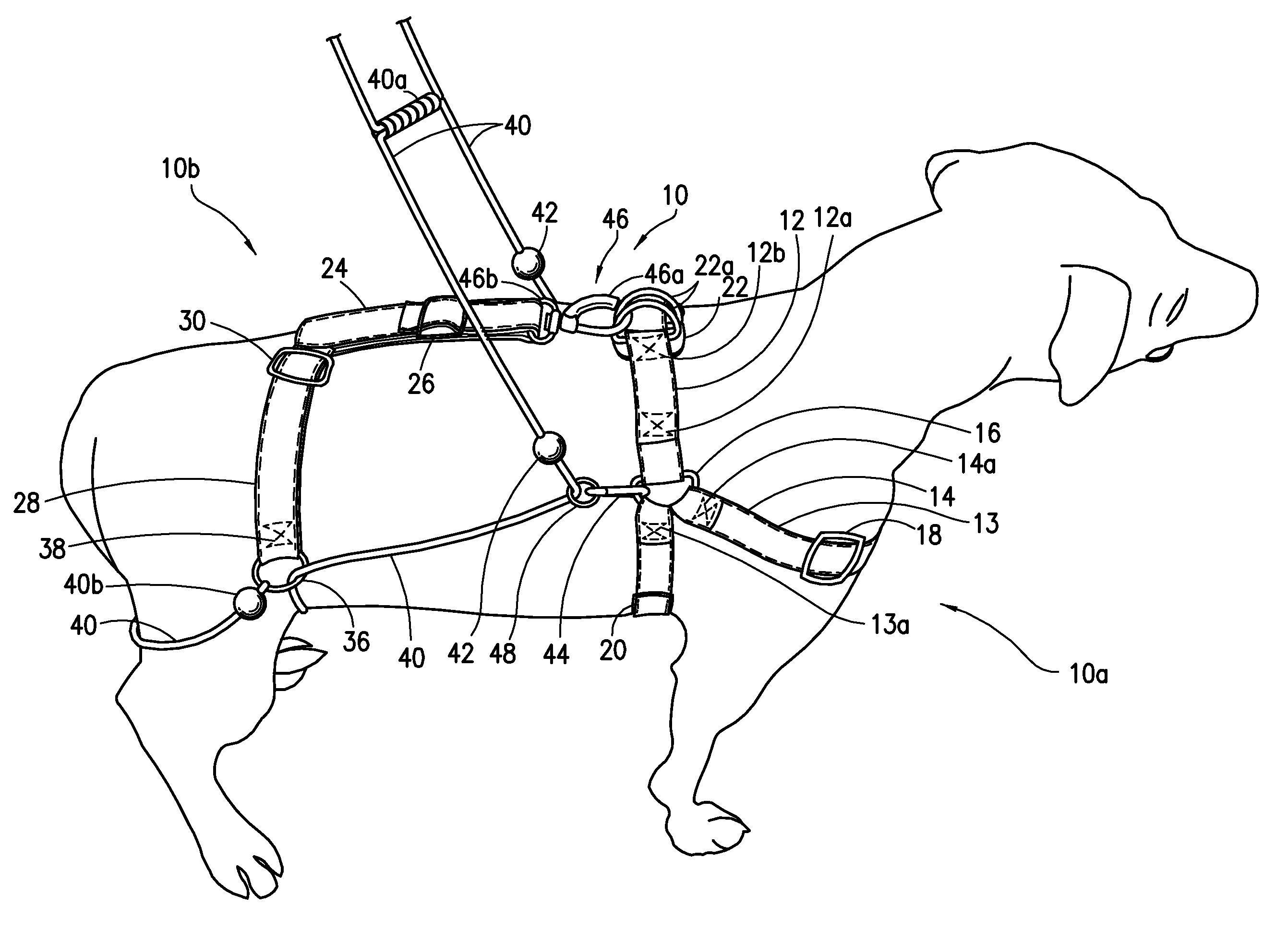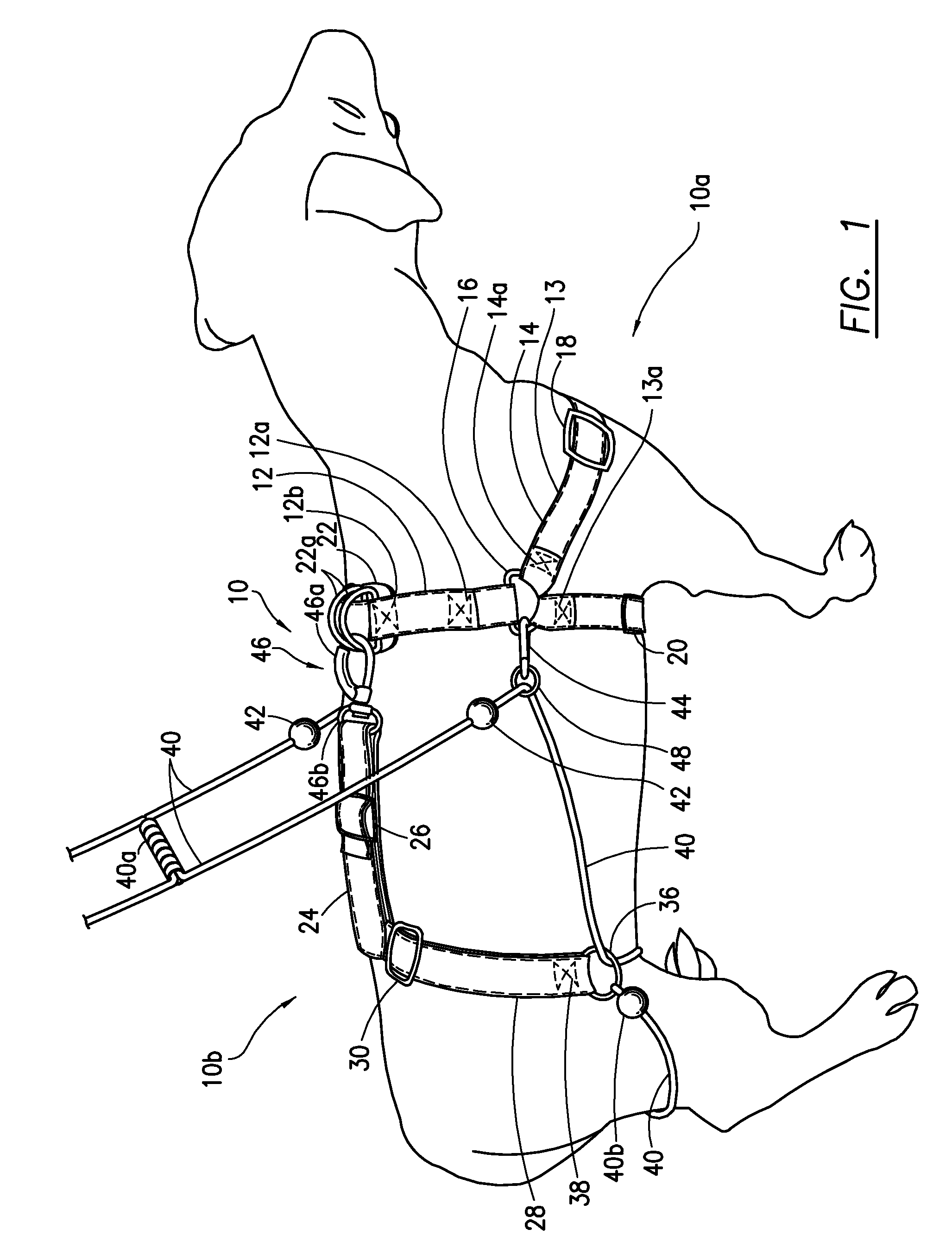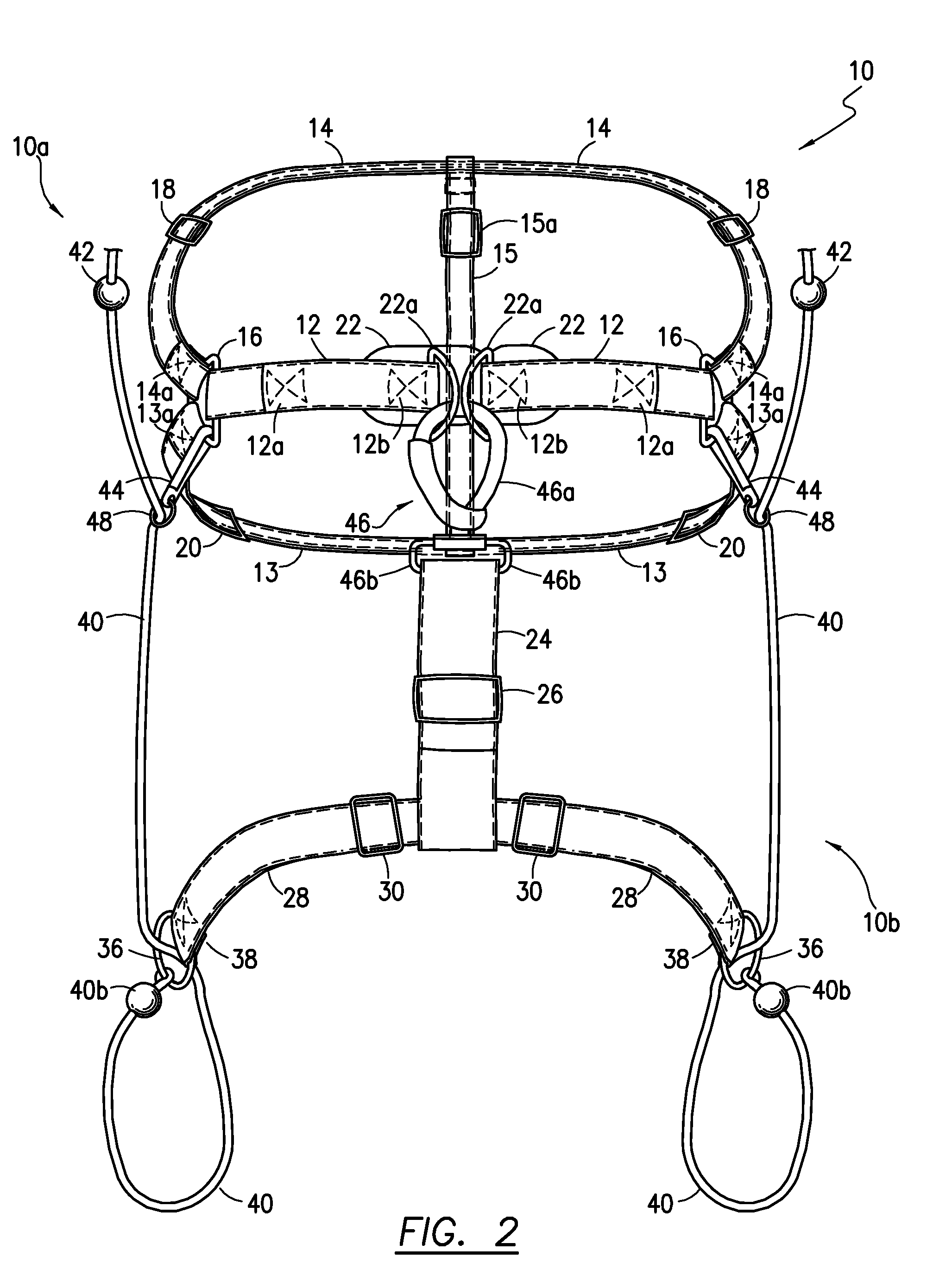Motion control harness for a medium to large dog
a technology for large dogs and harnesses, applied in the field of harnesses for medium to large dogs, can solve the problems of less control, increased risk of injury, and overpowering of dogs, and achieve the effect of restrainting the dog's rear leg muscles and not risking injury to the dog
- Summary
- Abstract
- Description
- Claims
- Application Information
AI Technical Summary
Benefits of technology
Problems solved by technology
Method used
Image
Examples
Embodiment Construction
[0023]Referring now to the drawings and in particular FIGS. 1 and 2, a control harness 10 is shown. Particularly, FIG. 1 shows the control harness 10 attached to a representation of a large dog while FIG. 2 shows a more complete view. The control harness 10 is the combination of a conventional adjustable dog harness 10a, which is well known in the art, and a control extension 10b that is attached to the dog harness 10a. Two side cords are a part of and extend from the control extension 10b to an undetermined length, and provide the primary restraining action. A control member 40a, through which the proximal ends of the two side cords 40 pass, provides a handle for the user 40a.
[0024]The control harness 10 is comprised of several narrow thin but very strong straps preferably made of an artificial fabric such as nylon. Nylon straps are extremely strong and have a lot of holding power and are desirable because of their light weight and flexibility. In addition, this material allows th...
PUM
 Login to View More
Login to View More Abstract
Description
Claims
Application Information
 Login to View More
Login to View More - R&D
- Intellectual Property
- Life Sciences
- Materials
- Tech Scout
- Unparalleled Data Quality
- Higher Quality Content
- 60% Fewer Hallucinations
Browse by: Latest US Patents, China's latest patents, Technical Efficacy Thesaurus, Application Domain, Technology Topic, Popular Technical Reports.
© 2025 PatSnap. All rights reserved.Legal|Privacy policy|Modern Slavery Act Transparency Statement|Sitemap|About US| Contact US: help@patsnap.com



